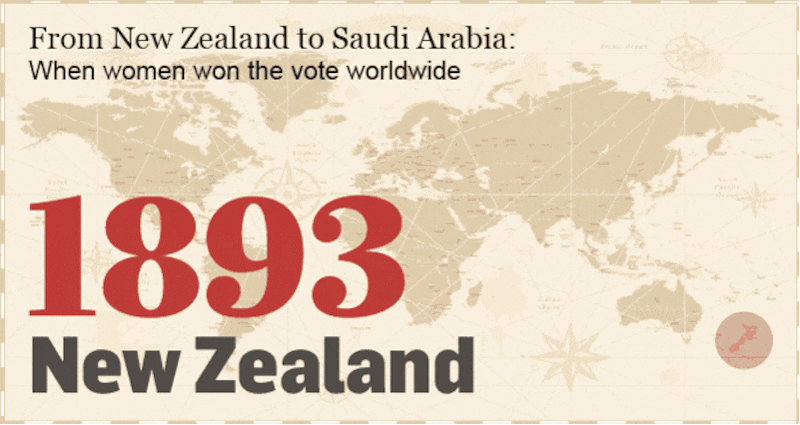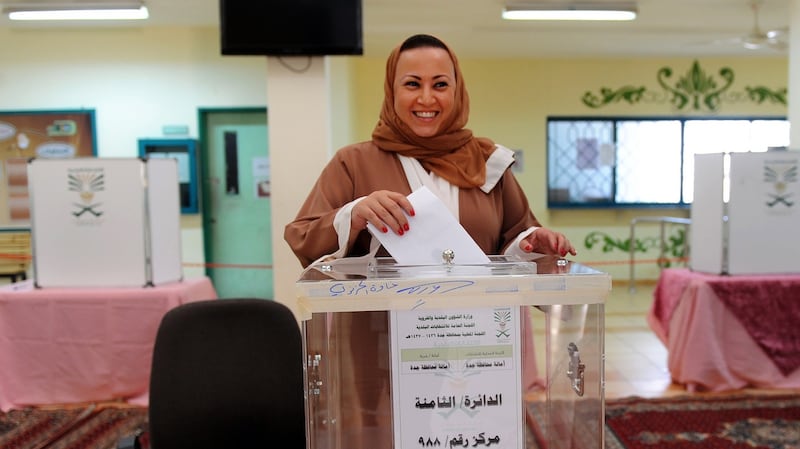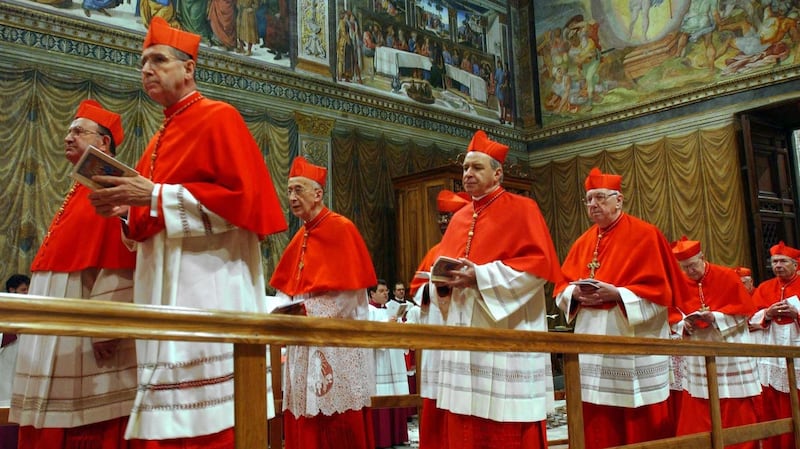The Representation of People Act 1918 granted the vote to Irish and English women aged over 30 who met certain property qualifications.
While some nations had extended that right to women earlier, other countries, in Europe as well as elsewhere, did not allow women to vote until much later into the 20th century.
New Zealand: First nation to grant female suffrage, in 1893, to all adult women.
Australia: In 1894 women in South Australia were granted the vote and the right to stand for parliamentary elections. In 1899 women in Western Australia were enfranchised. In 1902 the Commonwealth Franchise Act gave all white women in Australia the vote and the right to stand for election to the Australian Federal Parliament. Aboriginal women and men did not receive the vote until 1962.

Northern Europe: the Nordic countries were pioneers in women's suffrage. The first European nation to give women the vote was Finland in 1906. Women in the Grand Duchy of Finland, then an autonomous part of the Russian Empire, won the right to be elected members of the eduskunta, the Finnish unicameral parliament, in 1907. Women in Norway received the right in 1913, with Denmark following in 1915. Other Nordic countries such as Sweden enfranchised women between 1919 and 1921.
Azerbaijan: The first country in the East, and the first Muslim-majority country, to give the vote to women when it introduced universal suffrage in 1918.
Europe: The end of the first World War was an important time for the enfranchisement of women in many European nations. Austria, Germany, Poland and Russia granted the vote to women in 1918, with the Netherlands following in 1919. Spanish women received the vote in 1931.
Women in certain countries in Europe did not gain the vote until during or after the second World War. In 1944 French women received the right to vote. In 1945 Italy followed suit.
Other European countries were even later to grant women suffrage; Switzerland did not grant the right until 1971, and Portugal not until 1976.
Liechtenstein: Last country in Europe to grant women the vote in 1984
Canada: Canadian women, with the exception of Canadian Indians, received the vote in 1917. The latter were not enfranchised until 1960.
United States: Women's suffrage was granted on a local and state level from the late 19th century. In 1920 the Nineteenth Amendment to the United States Constitution stated that the right to vote of all citizens could not be denied by the US or any state within on the basis of sex.
Elsewhere, Mexico, Pakistan, Japan and Argentina granted female suffrage in 1947. China granted the right two years later in 1949 and India in 1950.
Examples of countries in which women have only recently been granted the right to vote are South Africa (black women, 1994), Kuwait (2005) and the United Arab Emirates (2006). Women in Saudi Arabia did not have the vote until 2015.

Brunei and Eritrea: No vote for men or women
Although many countries on earth do not have free, open and fair elections, most at least claim to be democratic. But no election has been held in Eritrea since it won independence from Ethiopia in 1993, nor in Brunei since 1962, meaning neither women nor men have a vote.

Vatican City: No women cardinals, no vote for pope
Women still have no vote in the Vatican, as the only election held here is among cardinals for a new pope, and women still cannot become cardinals.
Saudi Arabia: The last place to allow women to vote
In 2015, women in Saudi Arabia were permitted to vote and stand as candidates in municipal elections for the first time. But turnout was poor – just 10 per cent of ballots in that election were cast by women.
Pakistan: Lowest female turnout in the world
Women have been allowed to vote here since 1947, but female participation in elections is among the lowest in the world. In some of the most conservative areas, religious and community leaders call on men not to allow female family members to vote. Just 10 per cent of votes in the 2013 elections were cast by women, with female turnout as low as 3 per cent in some areas.
Kenya: Violence against women in elections
Human Rights Watch documented widespread sexual violence against women in Kenya’s 2017 elections, with many of the attacks carried out by security forces, including the police. According to the UN, politically motivated rape is on the rise, preventing women from participating freely in the democratic process.
Ecuador: Transgender voters choose their line
Men and women queue separately to vote in this conservative, predominately Catholic country. For the first time in 2017, transgender voters were allowed to choose which line to stand in, according to the gender with which they identified.
In numbers:
17: Number of countries with a woman head of state and/or head of government, up from just 8 in 2005
23.3%: Share of members of parliament worldwide who are women
732: Number of female ministers around the world, 18.3% of the total
50%: Mark surpassed by Bulgaria, France, Nicaragua, Sweden and Canada in share of women in ministerial positions
13: The number of men holding ministerial positions with responsibility for women's affairs
(Source: Women in Politics 2017 Map, by Inter-Parliamentary Union and UN Women, March 2017)










